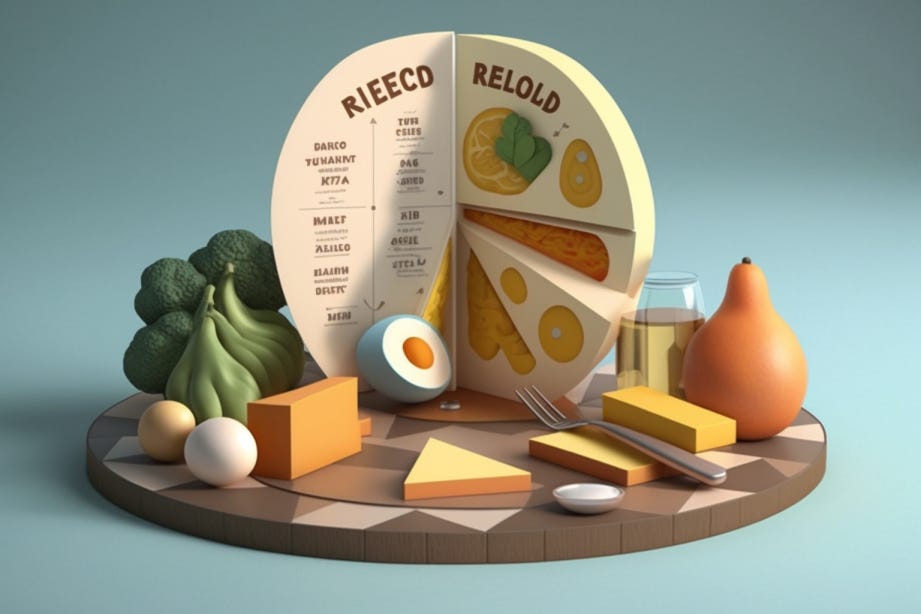What is a Ketogenic Diet
Unlocking the Benefits and Risks of the Ketogenic Diet for Weight Loss and Health
A ketogenic diet is a low-carb, high-fat diet that can help you lose weight. It is a very strict diet, and you need to be prepared for a major lifestyle change. It was originally developed in the 1920s to treat epilepsy in children.
How does the Ketogenic Diet work?
The ketogenic diet works by forcing your body to burn fat for fuel, instead of carbohydrates. When you eat a lot of fat and very few carbs, your body enters a state called ketosis. In ketosis, your body burns fat for energy, instead of glucose.
What is Ketosis?
Ketosis is a natural metabolic state in which the body burns fat for fuel, instead of carbohydrates.
When the body is in a state of ketosis, it is using ketone bodies for energy, instead of glucose. Ketone bodies are produced in the liver from fatty acids, and they can be used by all body tissues for energy.
In a healthy individual, ketosis is a normal and natural metabolic state. However, in people with diabetes, ketosis can be dangerous and potentially life-threatening.
What are the benefits of the Ketogenic Diet?
The ketogenic diet has many potential benefits, including weight loss, improved blood sugar control, and reduced inflammation.
What are the negative side effects of a Ketogenic Diet?
The ketogenic diet can cause some side effects, including fatigue, constipation, and headaches.
How long should I be on a Ketogenic Diet?
You should talk to your doctor before starting the ketogenic diet. They can help you determine if the diet is right for you and how long you should stay on it.
What is the right food for the Ketogenic Diet?
The ketogenic diet is a very high-fat, very low-carbohydrate diet. You need to eat mostly fat and very few carbs to enter ketosis. There are a few different ways to do this, but the most common way is to eat a diet that is about 80% fat, 15% protein, and 5% carbs.
What are the types of food for a Ketogenic Diet with high-fat content?
Some examples of high-fat foods that are part of a ketogenic diet include:
Butter
Cheese
Heavy cream
Nuts and seeds
Oils, such as coconut oil, olive oil, and avocado oil
Meats, such as bacon, sausage, and ground beef
Fish, such as salmon, tuna, and trout
What are the types of food for a Ketogenic Diet with protein content?
There are many types of food for Ketogenic Diet with protein content. Some examples include: meats, fish, eggs, dairy, nuts, and seeds.
What is the food I should not eat while on a Ketogenic Diet?
There are a few food items that should be avoided while on a ketogenic diet. These include high-sugar fruits, processed meats, and refined carbs.
What is a meal plan for a Ketogenic Diet?
There is no one-size-fits-all meal plan for the ketogenic diet. However, some general guidelines that may help you create a keto-friendly meal plan include:
Eating high-fat, low-carb foods such as meat, fish, eggs, vegetables, and healthy oils.
Avoiding sugary foods, processed grains, and starchy vegetables.
Limiting your intake of alcohol and other calorie-dense beverages.
Paying attention to your hunger cues and eating until you're satisfied.
Consulting with a registered dietitian or nutritionist to create a personalized meal plan.
How much weight can you expect to lose while on a Ketogenic Diet?
There is no one-size-fits-all answer to this question, as the amount of weight you can expect to lose while on a ketogenic diet will vary depending on a number of factors, including your starting weight, calorie intake, and exercise habits. However, many people who follow a ketogenic diet report losing significant amounts of weight in a relatively short period of time.
What are other alternatives to a Ketogenic Diet?
Some popular alternatives to the ketogenic diet include the Atkins diet, South Beach diet, Paleo diet, and the Zone diet.
The Atkins diet is a low-carbohydrate diet that focuses on eating foods high in protein and fat, and limiting carbohydrates. The South Beach diet is a variation of the Atkins diet that is less restrictive and allows for more carbohydrates. The Paleo diet is based on eating foods that are similar to what our hunter-gatherer ancestors ate. The Zone diet is a high-protein, low-carbohydrate diet that promotes balance between the different macronutrients.




